
Most incident management tools promise to help you prevent or manage incidents. incident.io takes a different approach to its homepage messaging. They accept that incidents are inevitable and then reframe the goal entirely. The question isn’t, “How do we avoid breaking things?” It’s, “How fast can we respond when things break?”
incident.io’s homepage starts by reframing the fundamental problem.
The hero copy plays with the famous startup mantra “Move fast and break things,” but flips it: “Move fast when you break things.”
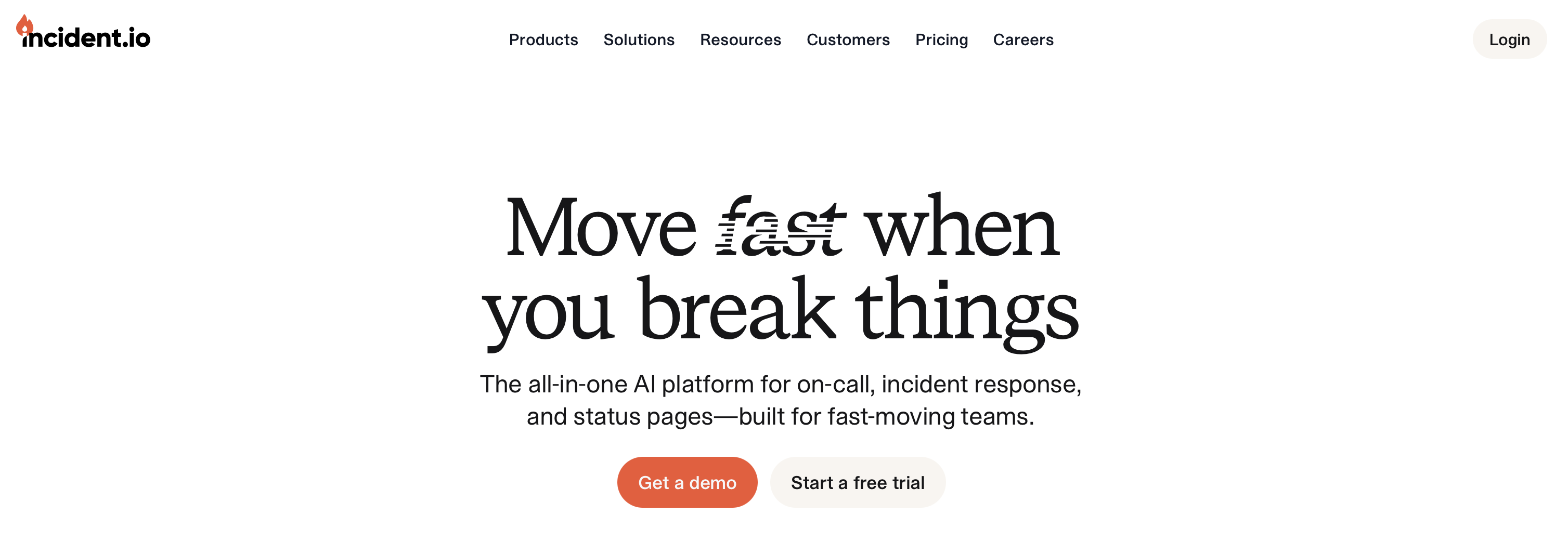
This reframing alone shows that one can’t prevent incidents or reduce downtime. Incidents are going to happen. The question though, is: how fast can one respond when things go wrong?
This opening sets a crucial shift: from trying to prevent the inevitable to focusing on response speed. But they don’t jump straight to their solution. Instead, they validate your pain first.
The next section shows chat bubbles of actual incident chaos:

Anyone who’s been on-call recognizes these conversations immediately. The section headline reinforces it: “Things go wrong. All the time.”
The section validates your experience: incidents happen to everyone. But this doesn’t mean you’re bad at your job. This is reality. Then comes the critical line:
“From minor issues to global outages, incidents are inevitable. But chaos doesn’t have to be.”
This is the flip.
They’re not saying incidents don’t have to happen. They’re saying chaos doesn’t have to happen. The problem isn’t the incident. It’s the scrambling, the confusion, the lack of coordination.
Once they’ve established this, they introduce their solution.
But notice the language incident.io uses.
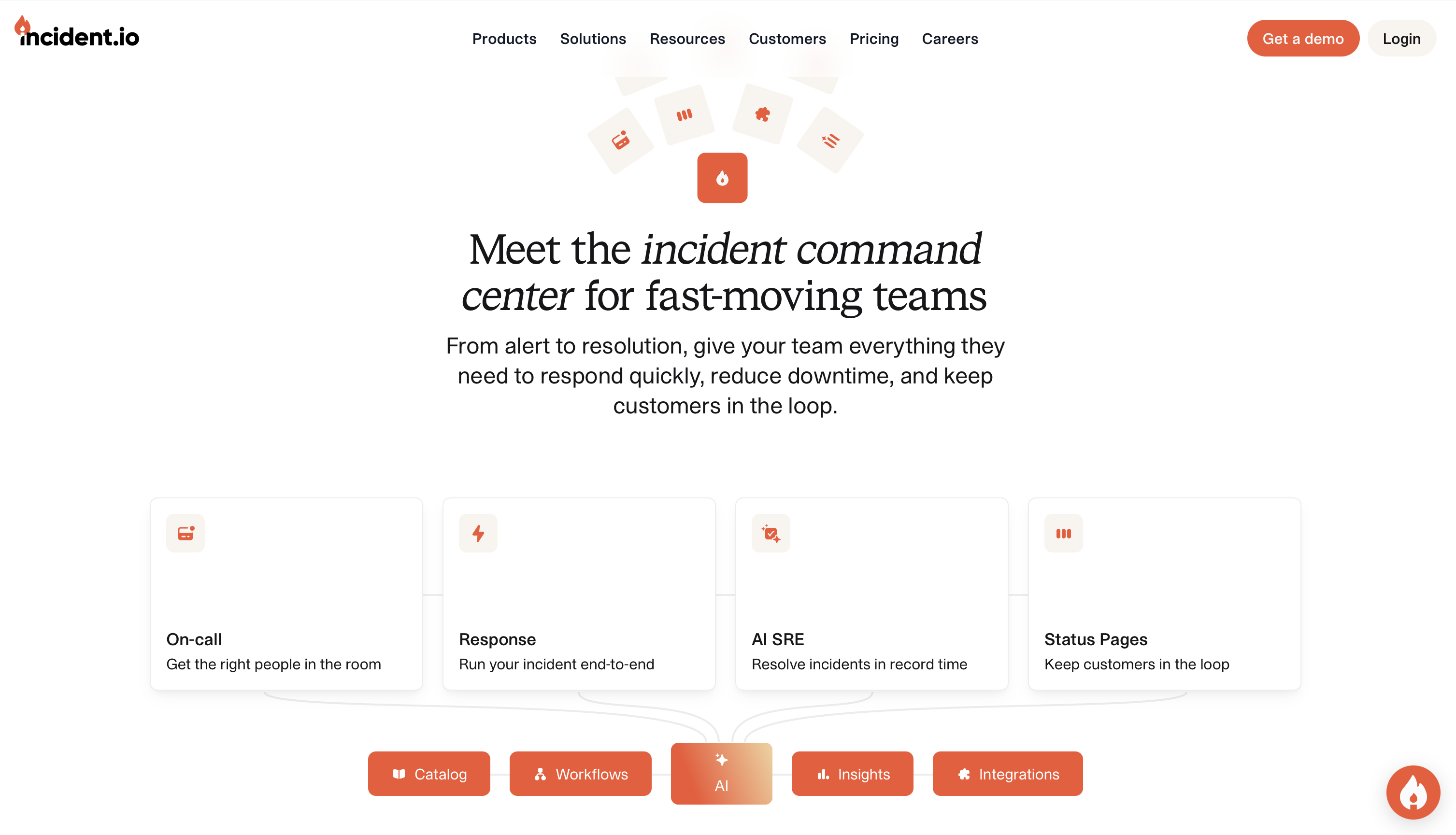
It’s “incident command center,” not “incident management software.”
That framing matters. Management is passive. A command center implies control, coordination, central operation. It’s military language for structured response to chaotic situations.
From this point forward, the homepage proves this works through specific capabilities paired with customer outcomes. Each section shows a feature alongside a testimonial that demonstrates real impact.
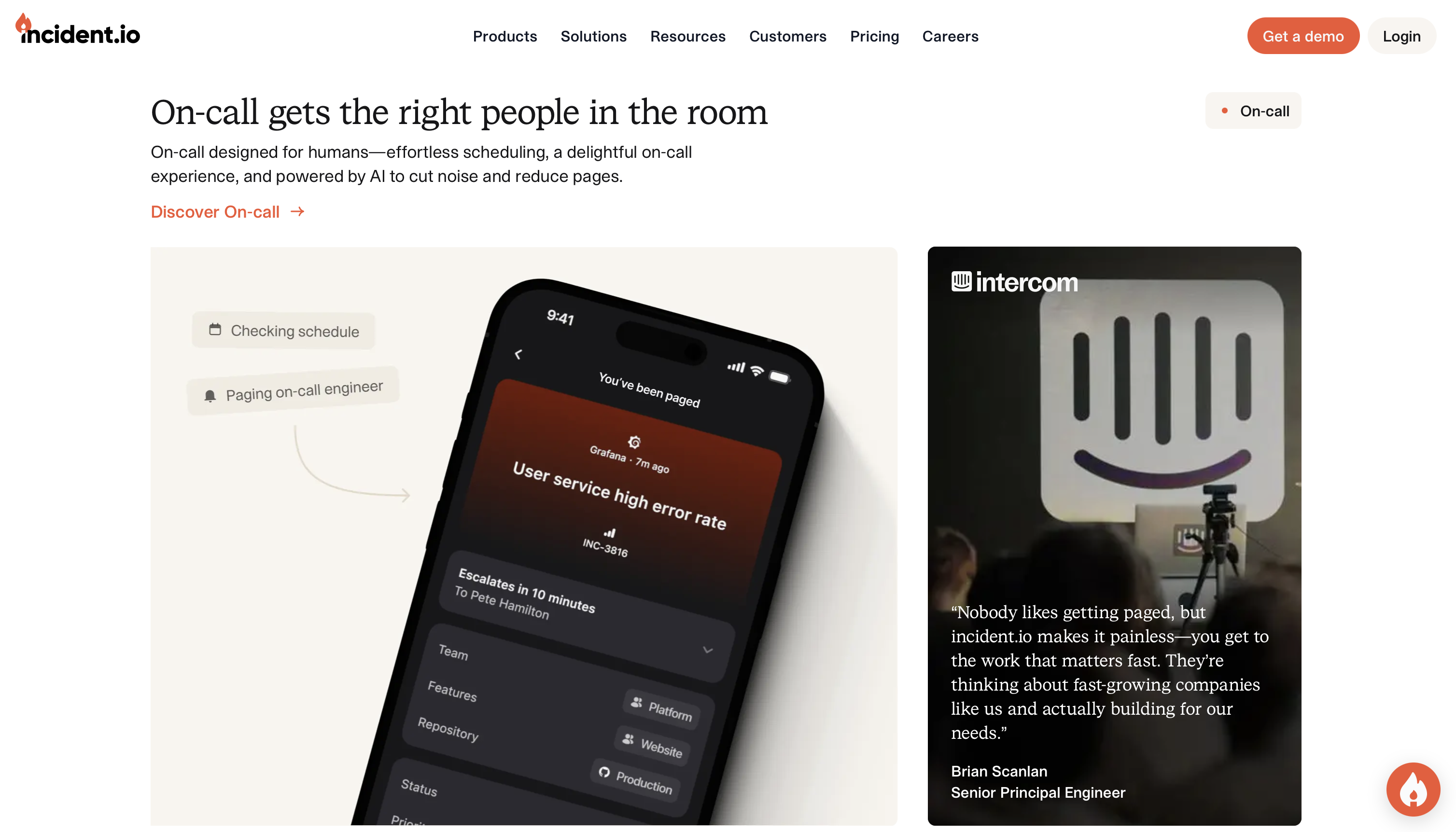
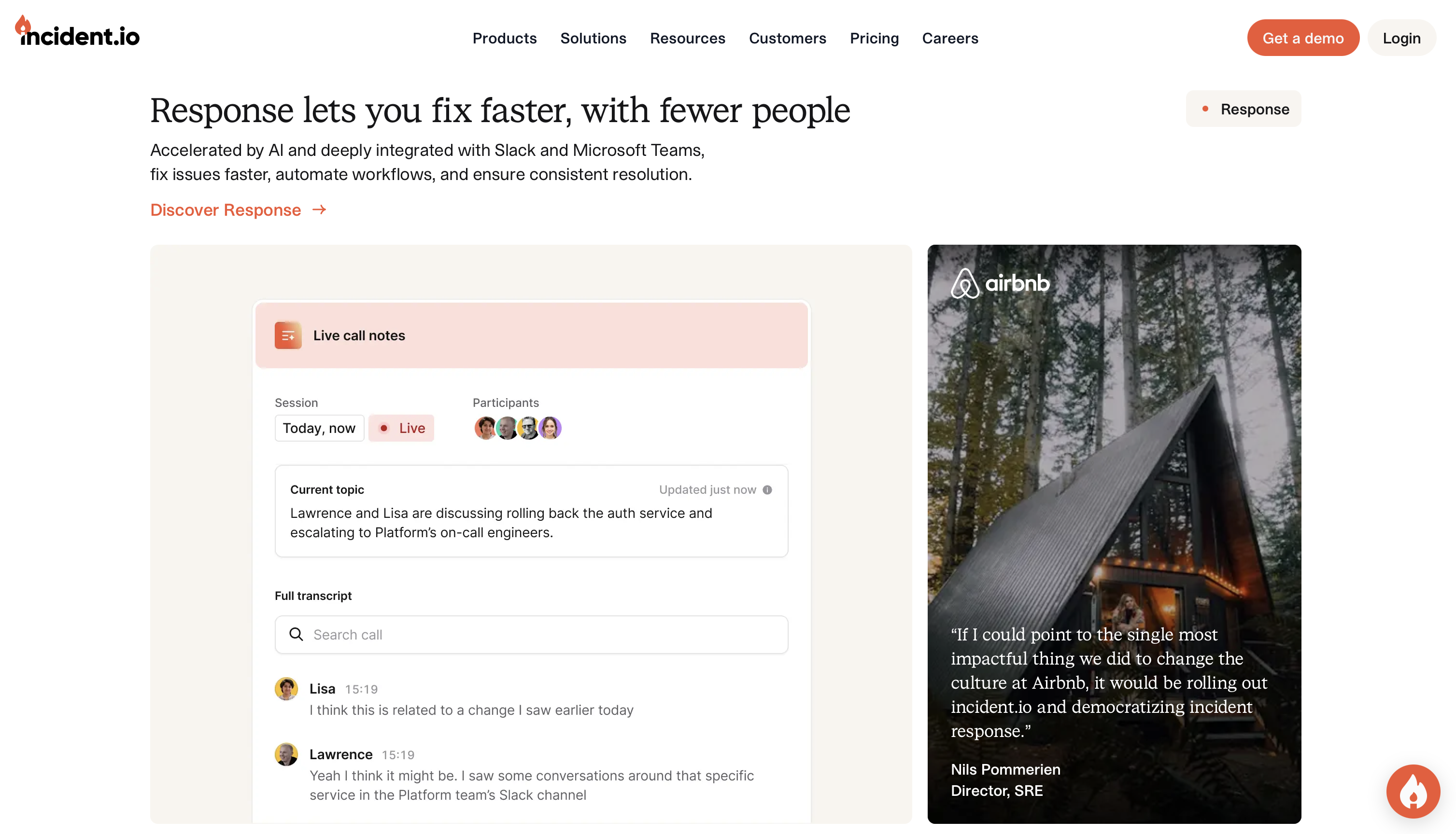
After establishing these outcomes, they reveal the infrastructure underneath: catalog, workflows, insights, integrations, AI. I appreciate the context of how the homepage introduces these elements. We’re not talking about surface-level tooling. We’re talking about the foundations on which the entire platform is built.

The final section brings it full circle with a playful headline: “So good, you’ll break things on purpose.” This is pure confidence. incident.io’s team is so confident in their solution that they joke you’ll want to create incidents just to use the product. It’s the opposite of fear-based selling. It’s aspirational confidence.
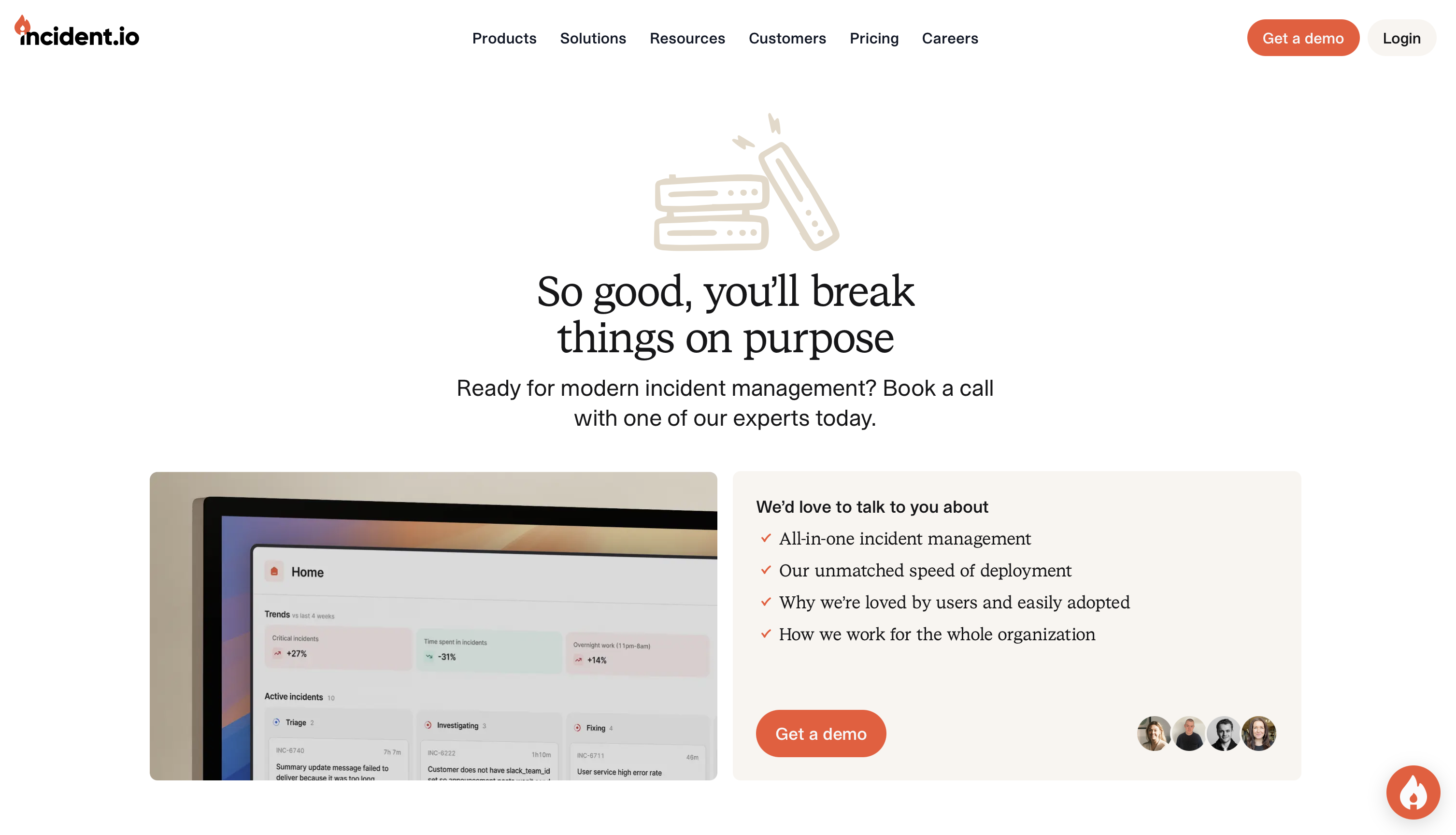
The entire homepage flow moves you from normalizing that incidents happen, to realizing chaos is optional, to understanding you need coordination infrastructure, to seeing proof it works, to feeling confident this is the right product.
Flipping buyers’ state from “we need to prevent this problem” to “we need to control what happens when this problem occurs” applies when:
